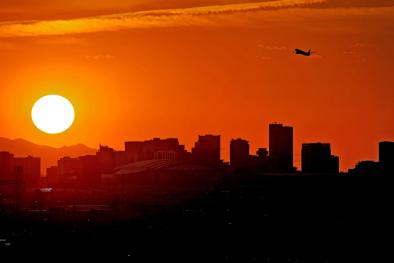Science Source
The Great 2006 Heat Wave over California and Nevada: Signal of an Increasing Trend
- States that most of the great California–Nevada heat waves can be classified into primarily daytime or nighttime events depending on whether atmospheric conditions are dry or humid
- States that a rash of nighttime-accentuated events in the last decade was punctuated by an unusually intense case in July 2006, which was the largest heat wave on record (1948–2006)
- States that there is generally a positive trend in heat wave activity over the entire region that is expressed most strongly and clearly in nighttime rather than daytime temperature extremes
- States that this trend in nighttime heat wave activity has intensified markedly since the 1980s and especially since 2000
- States that the two most recent nighttime heat waves were also strongly expressed in extreme daytime temperatures
- Provides background on regional weather patterns: Circulations associated with great regional heat waves advect hot air into the region. This air can be dry or moist, depending on whether a moisture source is available, causing heat waves to be expressed preferentially during day or night.
- States that a remote moisture source centered within a marine region west of Baja California has been increasing in prominence because of gradual sea surface warming and a related increase in atmospheric humidity
- States that a prolonged stream of moisture from this southwestern source added to the very strong synoptic dynamics during the 2006 heat
- Discusses the relative contributions of these factors and possible relations to global warming
Related Content
Science Source
| MDPI
The Effects of Historical Housing Policies on Resident Exposure to Intra-Urban Heat: A Study of 108 US Urban Areas
Jeremy S. Hoffman, Vivek Shandas, and Nicholas Pendleton
Headline

Nov 17, 2023 | Climate Nexus Hot News
Our Warming World Is Dangerous For Human Health
Headline

Oct 16, 2023 | AP
Rising Heat-Related Deaths in AZ
Headline

Oct 11, 2023 | Climate Nexus Hot News
Study: Climate Change Could Push Heat and Humidity Past Survivable Limits for Humans


